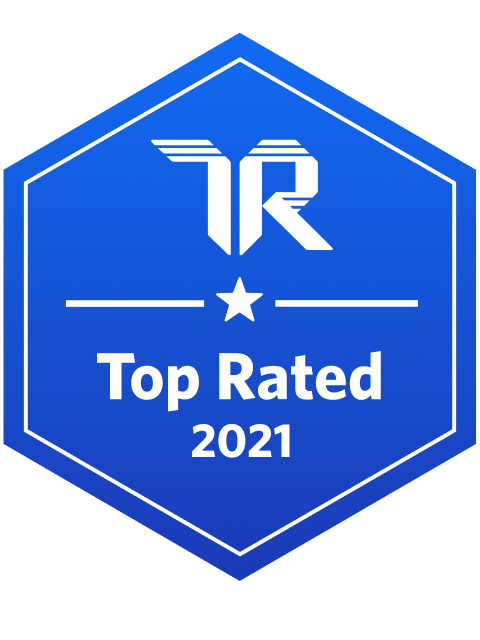Best Free Database Software
Database software varies as much as the information you will use the tool to store and organize. There are plenty of free database options available for those who do not want to pay. They fall into two categories: Relational and Non-Relational Databases. In helping you make the right choice for your use-case, we will explore the differences between the two. If you already know the difference, click here to skip to our recommendations for each
The software covered in this piece are:
What is the Difference Between Relational and Non-Relational Databases?
| trScore | Top Rated Award | Open Source | Biggest Pro | Biggest Con | |
| Microsoft SQL | 8.9/10 |  | no | Trusted, Reliable, Secure Brand | Free Version of a Paid Software |
| MySQL | 8.5/10 |  | Yes | 30-Years of Community Development | Some Issues With Larger Datasets |
| Postgres SQL | 8.8/10 |  | Yes | Customization | Performance Lags on Large Datasets |
| MongoDB | 8.4/10 |  | Yes | Flexible, Visual Results | Slightly Slower at Large Datasets |
| Redis | 8.8/10 |  | Yes | Fast | Key-Value Not For Everyone |
| Neo4j | 8.6/10 | No | Yes | Very Visual | Code-Edits Must Be Published Per Licensing |
Relational Database Software:
This type of data storage solution holds information in tables. These tables have columns and rows like the other types you may have used in the past. The columns are called attributes, which represent concepts or keys. These are categories of data. The rows, or Tuples, contain individual pieces of information. Individual cells in tuples are not related to one another directly. The whole table is called a relation. If you would like a more in-depth explanation, consider reading this IBM piece.

A major benefit of relational database software is its searchability through SQL queries. Through this, users can find and sort large datasets with ease. To summarize the complicated process, the system falls down to comparing table datasets. To accomplish this, relationships are made with specific identifiers given to data types. These are called keys. Keys are then interrelated between tables. This allows for quick, efficient searchability and use. For a more detailed explanation of how this works, watch below.
Non-Relational Database Software
Non-relational database software do not use rows and columns. The tradeoff here is flexibility and information complexity. These types are often used when the data is more detailed or in different formats to more traditional forms. They are also usually faster, as they do not have to search multiple tables. Relational databases tend to scale slightly worse than Non-relational. The latter scales particularly well if data is changing frequently.

Non-relational databases come in different forms. The 4 common types are document, graph, key-value, and wide column.
Best Free Relational Databases
Microsoft SQL:
This is a highly rated, advanced tool from a reliable company. This is for those who know what they are doing with database software. Many users will have experience with other database software at their companies. Microsoft SQl is popular with mid-to-large size organizations. Unsurprisingly, this software is not recommended for Mac OS x and iOS systems. This software will integrate with database management software like MS Access. It also works with Microsoft Office.
This tool is built for windows ecosystems and performs fantastically in this case. Constant praise is the highly-rated security and compliance features. This software is a free version of a paid option. Microsoft SQL is great for those looking to consider paid, advanced software, but want to try it first. Secure, massive data servers are available but will cost a premium.

Microsoft SQL is best for those in a large company that has limited, high-security needs. If you are working with sensitive information, this may be very important. It also supports Java, Javascript, and Ruby. These are not supported in some other free relational options.
“Microsoft SQL Server is well suited for various scenarios and solutions since it is a general-purpose relational database capable of easily and efficiently meeting the needs of your website or application. It is fast, reliable, scalable, and easy to use. Due to its popularity, there are many sources of user help, tutorials, examples, and solutions available.”
Gary Davis│Director│WebguildComputer Software, 1-10 employees
MySQL:
This tool has been around for 30 years now and is used by many people. The high availability comes from being completely free. MySQL is an open-source relational database management system. Editions are maintained by a large, active community.

Unlike Microsoft SQL, this will run on Linux, Unix, and Windows alike. The software is also significantly easier to use. This tool includes a ton of language support as well. MySQL supports more languages than any other software on this list.
With the large community comes great support. Some users have said reliability can be an issue. With the enthusiastic fanbase, issues tend to get fixed quickly. Reviewers praise the ease of making a query in this tool. It has reasonable for android and apple phones as well.
MySQL is best suited for small-to-mid-sized datasets. Users report some issues with more complex requests at higher sizes.
One of our reviewers put it well when asked when they would recommend MySQL
“When a classic, small relational database (I mean small as a small number of tables, not records necessary) needs easy to install database with easy to find tutorials, that’s free, robust, and very well documented.”
Balázs Kiss│ Software Developer Webvalto │Ltd.Banking, 51-200 employees
PostgresSQL:
This is another open-source database, used by companies of all sizes. This tool works on all major operating systems, including OS X, Linux, and Windows. The use-case for this software falls in something of a middle ground between the other two. The incredible customization allows a very skilled team to take advantage of the open-source nature. Customization is a key trait of Postgres, and is important to keep in mind.
The open-source nature means this software has been praised for consistently improving. Users praise the scalability and cross-platform support.

PostgresSQL does not support javascript or Ruby, which may be an issue for some specific use cases. If you want dedicated vendor support, this will not be the tool for you.
Reviews cite that the performance can lag behind that of the competition, especially for large datasets.
“PostgreSQL is perfect if you are an experienced software engineer or database admin. Its wide feature set will be really useful the more you use it. It is also a cheap alternative to SQL Server since you need to pay a fairly pricey SQL Server license especially for business and enterprise, meanwhile, PostgreSQL is completely free to use.
The learning curve is a bit steep compared to MySQL and SQL Server, so might not be suited for a beginner.”
Verified User│Engineer in Information Technology│Professional Training & Coaching Company, 11-50 employees
Best Free Non-Relational Databases
The image below gives a great infographic on the types of non-relational databases. These do not have a foundation in the SQL language. For this reason, they are also called non-SQL database software. While there are tons of options, here are a few of the TrustRadius favorites.
MongoDB:
MongoDB is another free, open-source tool on the list. This software is a document-based information storage option. This is currently the widest-used document-based solution. It is also a Top-Rated award winner for No-SQL databases and open-source databases.
MongoDB stores data in JSON, BSON, and XML formats. The program is written in C++.
The best way to help you decide if graph databases are right for you is to highlight what other users have said. As a leader, MongoDB is seen by many as the best in this type.
“Scenarios where MongoDB is well suited:
– When working with small/medium-sized datasets where speed and flexibility are priorities.
– When working with schema-less or polymorphic models that would be much harder to represent in a traditional RDBMS.
– More generally MongoDB makes sense as a place you’d store your business logic/frequently accessed data, not as storage for infrequently accessed long-term storage.”
Eric Mason │Lead Developer│SaaSquatchMarketing and Advertising, 11-50 employees
Many reviewers note this tool is less suitable for very large data-sets. Non-relational databases also tend to be slower than relational databases.
While normally we would summarize the use-case, one reviewer did it for us:
“Depends on the use case, MongoDB may or may not be the best solution. It is not the silver bullet that is going to solve all the database problems. If the use case does require transactions (e.g., financial) or is highly relational, then you would be better off going with the traditional SQL databases such as PostgreSQL. However, if you do not need those, and your requirements lean more towards storing unstructured data, or if your data fits its document-based approach, then MongoDB is a great solution.”
Verified User│C-Level Executive in Engineering│Information Technology & Services Company, 1-10 employees
Redis:
Another open-source tool on our list. There is a pattern emerging here for those looking for free databases software. Redis is a Key-Value non-relational system.
The major benefits here come from speed and ease of use. If you need to be distributed caching and synchronization, this will work for you. You and your team will be able to quickly and reliably make hundreds of requests daily.
This software is free for most use-cases. This is largely as long as your modifications do not become commodified. Our reviewers had plenty to say about how best to use this tool.
“Redis is great for queues (push/pop) and pub/sub. It can also be used for caching though take care of managing those expired settings and don’t mix permanent keys with expired keys on the same hosts unless you want to spend some time troubleshooting unplanned evictions. When looking at open source solutions to messaging, queuing, background jobs, etc. – you’ll find many solutions work with Redis out-of-the-box.”
David Sommers│CTO│DocuTAPComputer Software, 201-500 employees
Neo4j
Another free, open-source tool on this list. Neo4j is a graphical user interface non-relational database system. This is ideal for users who need a more visual approach to explore their data. Its “pricing” is a little complicated. While the community version is free, there is the requirement that changes to the code be made public. If you want to customize without this, you will have to purchase a license.

The user interface does a good job of explaining the major difference in this type of system. Users praise its speed and ease of install.
“It’s very well suited for storing graph types relationship information, such as a group of people and their relationships. Data modeling this sort of information in a traditional SQL database is a pain and inefficient. Using Neo4J allows for efficient modeling of data while providing rich querying capabilities using Cypher. It’s also a great fit for any programming language because of its support for REST API.”
Anudeep Palanki│Application Developer│Monsanto CompanyFarming, 10,001+ employees
More About Database Software Options
If you are still curious about database tools, we have many resources available. Check out our category pages on relational databases and non-relational databases. These are great places to find options if you consider premium software. If you end up using several options, explore database management software to improve your experience.
Was this helpful?

